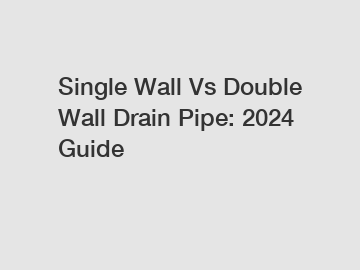How Do Solar Panels Export Work?
Sep. 27, 2024
Solar panels have become a significant investment choice for both residential and commercial property owners. While many people are aware of how solar panels generate electricity from sunlight, a lesser-known aspect is how this electricity can be exported back to the grid. This process not only helps homeowners offset energy costs but also contributes to a cleaner environment. Here's a simplified explanation of how solar panel export works.
The Basics of Solar Panel Export
When you install solar panels on your property, they convert sunlight into direct current (DC) electricity. This energy can either be used to power your home directly or be stored in a battery for later use. If your solar panels generate more electricity than you consume, the excess energy can be exported back to the local grid. This is most beneficial during sunny days when your system is likely to produce more power.
Net Metering: The Key to Exporting Energy
In many regions, net metering is the primary mechanism that allows solar panel owners to export energy. Under this policy, utility companies credit homeowners for the excess energy they feed back into the grid. Essentially, when your solar panels generate more electricity than you need, the surplus is sent to the grid, and your electric meter runs backward, reducing your overall energy bill.
How It Works: A Step-by-Step Breakdown
1. Energy Generation: Your solar panels capture sunlight and convert it into electricity. This energy can be used immediately, stored in batteries, or exported.
2. Exporting to the Grid: When your solar system produces more energy than you require, the surplus is routed through an inverter, which converts DC electricity into alternating current (AC). The AC electricity is then sent to the grid.
3. Meter Adjustment: Your utility company has a smart meter that tracks both the energy you draw from the grid and the energy you export. Credits for the exported electricity are applied to your account, significantly reducing your monthly bill.
Explore more:How Do Solar Panels Impact Energy Costs?
The effect of all kinds of packing element sealing ring
What Is Ductile Iron Pipe Used for?
Differentiating industrial hoses: Tips for buyers?
Are R9 Braids the Ultimate Protective Style?
Are OEM wire spiral hydraulic hoses better?
Mastering the Art of Wire Spiral Hose
4. Reimbursement: Depending on state regulations and your utility company, you may also receive cash payments for the surplus electricity you export, instead of just credits toward your bill.
Benefits of Solar Export
Exporting solar energy has numerous benefits. First, it maximizes the efficiency of your solar panel system by allowing you to profit from excess energy. Additionally, it contributes to a more sustainable energy future by decreasing reliance on fossil fuels. The collective reduction in carbon emissions can significantly impact local ecosystems and climate change.
Challenges to Consider
While exporting solar energy has many advantages, there are challenges that potential solar panel owners should be aware of. The effectiveness of net metering varies from one utility to another and can change based on state policies. Some regions may have cap limits on how much energy can be exported, which could affect overall savings.
Homeowners should also consider factors like system size, local solar insolation levels, and potential future expansions. Conducting thorough research and consulting with expert solar installers can maximize the benefits of exporting solar energy.
In conclusion, understanding how solar panel export works empowers homeowners to make informed decisions about their energy consumption and investments. By effectively directing surplus energy back to the grid, you are not just cutting costs but also paving the way for a sustainable future.
For more information, please visit steel buoys export, UHMWPE Pipes customize, buoyandpipe.com.
Explore more:What are hydraulic hoses made of? Are traditional materials still the best choice?
How Chinese Hydraulic Fittings Improve Industrial Systems?
How to choose SAE 100 R1 hose?
Unraveling the Benefits of EN 856 4SH
How to Choose How Many AC Lines Are in a Car
4 Tips to Select a Textile Braid on Sale
OEM Wire Spiral High Pressure Hydraulic Hose: Steel vs Rubber
38
0
0
Related Articles









Comments
All Comments (0)